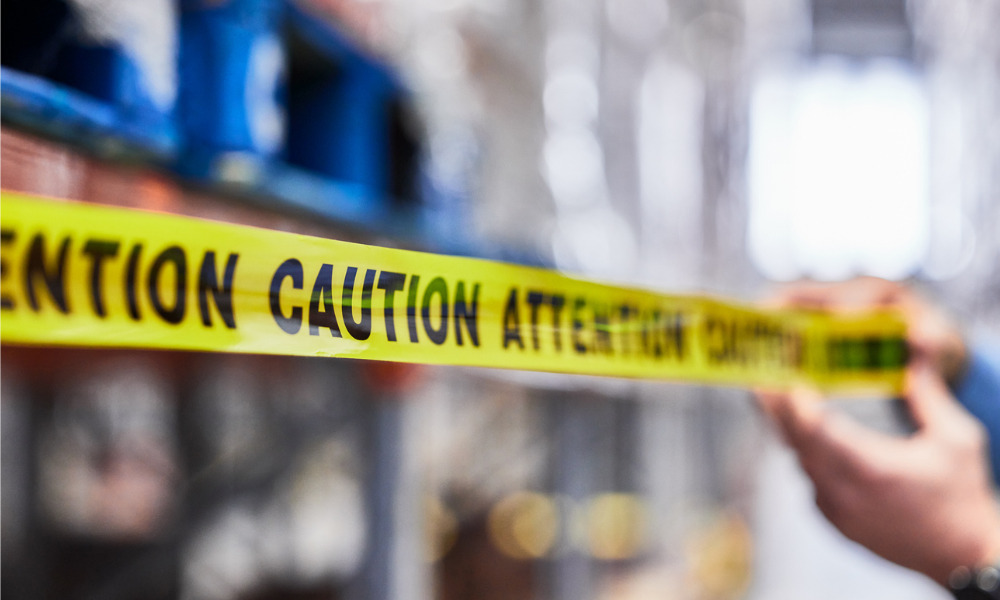Understanding the hierarchy of controls

Employers in all types of workplaces must know different methods used to control hazards and risks. Recently, a construction worker in Alberta died after being struck by a dump truck. In September, a maintenance worker for the transit system in Mississauga, Ont. died while carrying out repair work on a bus. And in October last year, actor Alec Baldwin accidentally shot cinematographer Halyna Hutchins on the set of the Western film “Rust”.
These are some of the incidents that can happen any day in different workplaces. Risk is a part of everyday life and organizations are not expected to eliminate all probabilities, according to the International Labour Organization (ILO). “[But] what they must do is make sure they know about the main risks and the things they need to do to manage them responsibly,” it said.
To do this, employers must turn to effective methods to control hazards and risks.
Read more: How to carry out risk assessments in the workplace
The hierarchy of controls
Here are the five most common methods to control the threats to workers in the workplace.
1, Elimination
Physically removing the hazard in the workplace must always be the first choice for employers. If the hazard is eliminated, then it can cause no harm to anybody.
2, Substitution
Second is substitution. Substituting a material or a process with a less hazardous one is an effective way to eliminate the risk. Employers must ask two questions during this process, according to WorkSafeBC.
“Can I find safer ways to perform the task?” is the first one. “For example, if falling is a hazard, eliminate the risk by storing stock at lower heights so workers don't have to climb ladders to reach the goods,” it said.
“Can I use something less harmful?” is the other. For example, if chemical-heavy industrial cleaners are a hazard, consider substituting cleaners made of vinegar and water mixed with salt, borax, or baking soda. Just make sure the substitutions don't create new hazards.
Read more: Seven reasons new workers are more likely to get injured
3, Engineering controls
Engineering controls rank third in the hierarchy of controls. These are used to make changes to the work environment, machine or piece of equipment, with the goal of reducing the hazard at the source.
Here’s one example, according to the labour union United Food and Commercial Workers (UFCW): exhaust ventilation can be used to remove a harmful substance such as carbon dioxide (dry ice) from the air.
According to the Centers for Disease Control and Prevention (CDC), the most effective engineering controls:
- are part of the original equipment design
- remove or block the hazard at the source before it comes into contact with the worker
- prevent users from modifying or interfering with the control
- need minimal user input for the controls to work
- operate correctly without interfering with the work process or making the work process more difficult
4, Administrative controls
Next is administrative controls. This refers to changing the way people work. This may include procedural updates, additional training, or increasing the visibility of precautionary signs and warning labels.
This kind of hazard control works when elimination, substitution or the use of engineering controls are not feasible. However, this only ranks fourth in the hierarchy of controls in terms of effectiveness and efficiency.
“Administrative controls are not seen as effective as other controls because it is at risk of human error and is typically used as a temporary solution rather than a sustainable, long-term solution,” according to Creative Safety Supply.
Examples of administrative controls include training, maintenance, housekeeping and wall and floor signs.
5, Personal Protective Equipment
PPE ranks the lowest in the hierarchy of controls. It is the last line of defense if workers cannot be completely removed from a hazardous environment.
PPE is equipment worn by a worker to minimize exposure to specific hazards. Examples of PPE include respirators, gloves, aprons, fall protection, and full body suits, as well as head, eye and foot protection.
“Using PPE is only one element in a complete hazard control program that would use a variety of strategies to maintain a safe and healthy environment,” according to the Canadian Centre for Occupational Health and Safety (CCOHS). “PPE does not reduce the hazard itself nor does it guarantee permanent or total protection.”
Read more: Eight ways to improve construction health and safety
Choosing which methods to use
The use of any or all of these controls depend on the workplace hazards that need to be addressed. But you are not required to limit yourself to using just one at a time.
“If you cannot completely eliminate a hazard, then use a combination of control methods to protect yourself and your co-workers from being exposed to occupational hazards,” said the ILO.
Protecting employees from harm requires ongoing effort. To do this, “you’ll need to monitor the effectiveness of the hazard controls in place and improve those that don’t measure up,” according to WorkSafeBC.
Lastly, do not forget to record your findings. Note the hazards, how people might be harmed by them, and what's already in place to control the risk.
“This documentation doesn't need to be complicated, but it can help you communicate and manage risks in your workplace,” said WorkSafeBC.





